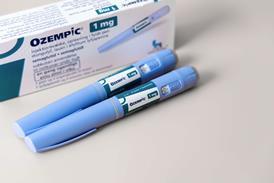All CPD case study articles
-
 CPD Supplement
CPD SupplementQualification of stride velocity endpoint in Duchenne Muscular Dystrophy
In April 2019, the Committee for Medicinal Products for Human Use (CHMP) issued a qualification opinion on stride velocity as an endpoint in clinical studies of medicines for the treatment of Duchenne Muscular Dystrophy (DMD).[1] Mutations in the dystrophin gene cause this inherited, x-linked disorder which causes progressive muscle weakness ...
-
 CPD Supplement
CPD SupplementCTIS national pilot – Belgium
Although the CTIS is still under development, several EU countries (eg, Belgium, France, Germany, Finland and the UK prior to Brexit) are running national pilots to test the new way of working introduced by the Clinical Trial Regulation 536/2014. Pilot conditions in the various countries are different. The Heads of ...
-
 CPD Supplement
CPD SupplementCase Study- Luxturna
The ATMP Luxturna (voretigene neparvovec) is a GTMP which utilises a recombinant adeno-associated viral vector serotype 2 (rAAV2) capsid as a delivery vehicle for the human retinal pigment epithelium 65 kDa protein (hRPE65) cDNA to the retina. Luxturna is approved for patients with retinal dystrophy associated with biallelic RPE65 mutations ...
-
 Journal
JournalGene therapy: regional assessment comparison
Axicabtagene ciloleucel (tradename YESCARTA) is an autologous chimeric antigen receptor T-cell (CAR-T) therapy that targets CD19 and is approved for the treatment of aggressive, relapsed or refractory forms of B-cell non-Hodgkins lymphoma (NHL). The active substance is composed of a patient’s cells that have undergone ex vivo modification, which causes ...
-
 CPD Supplement
CPD SupplementCreating an integrated summary of immunogenicity report
Introduction The purpose of this case study is to illustrate the creation of an integrated summary of immunogenicity report (ISI) that fulfils the recommendations described in current regulatory guidance for the scope of information needed to facilitate assessment of immunogenicity-related risks to support marketing authorisation of novel and biosimilar versions ...



















